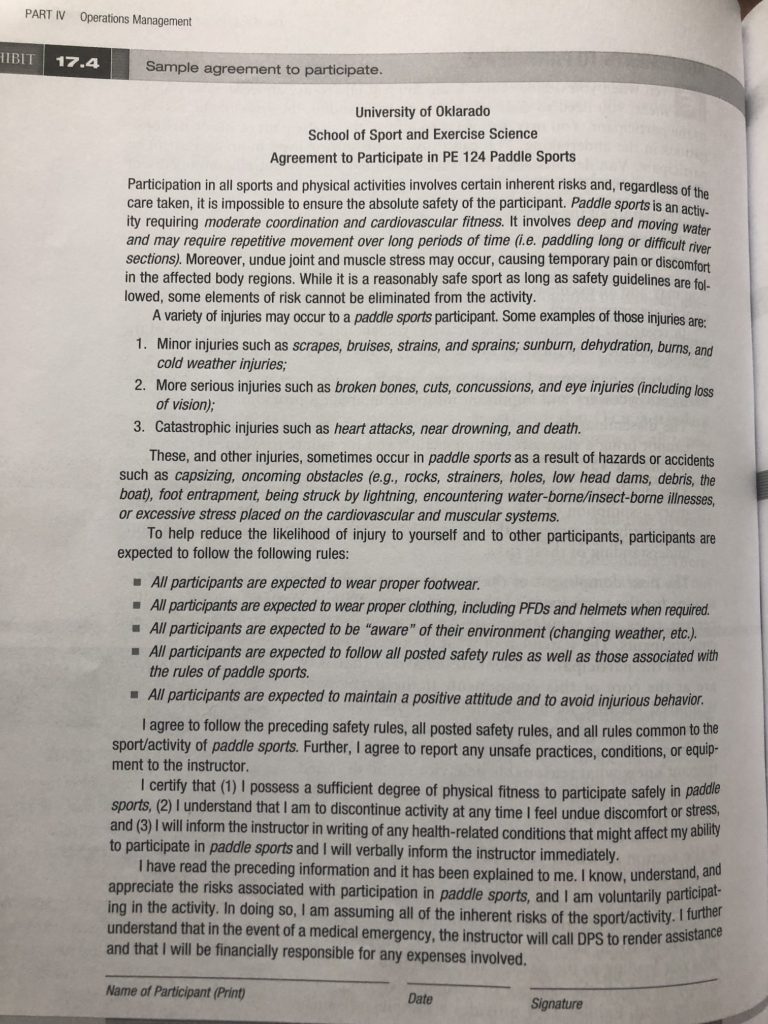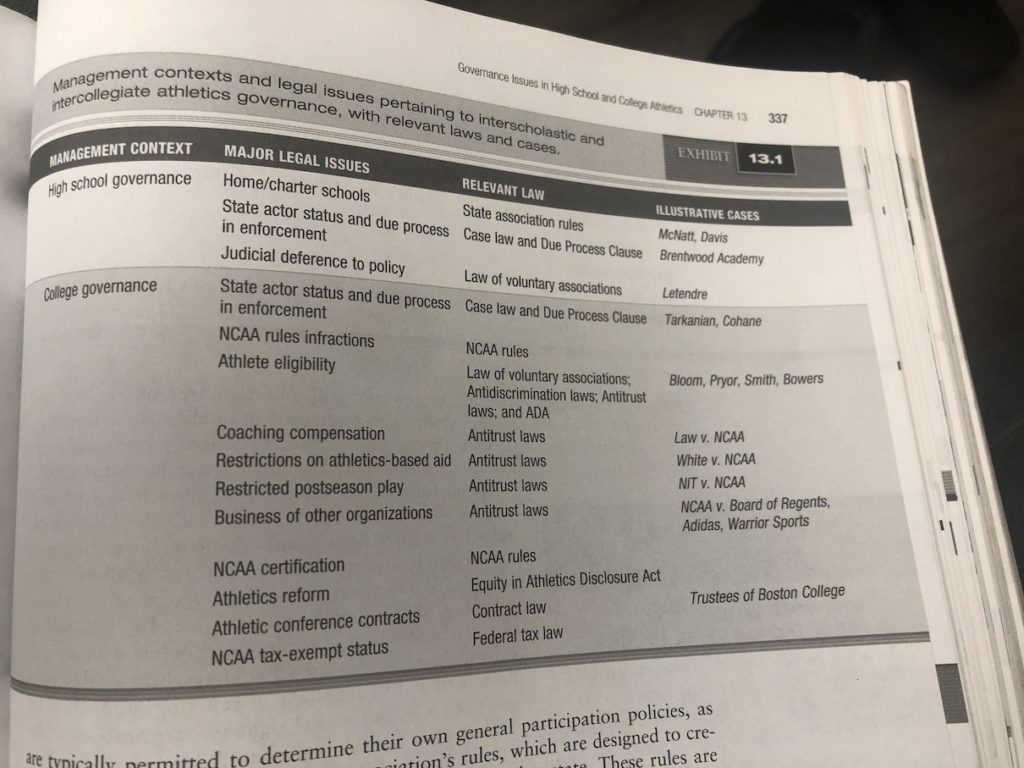Another 30-page chapter! Yee-haw!
This chapter revolves around laws regarding discrimination in hiring and firing of employees. There are a lot of protections in regular job postings to ensure the position is fairly and appropriately advertised and interviewed but when it comes to top positions a lot of the criteria are subjective and it is easy for bias to seep in.
The Rooney Rule is namedropped here, some states are adopting versions of it.
The Civil Rights Act includes Title VII, which handles employment discrimination:
- Scope
- Employers with:
- At least 15 employees
- Has interstate commerce
- Employees work at least 20 calendar weeks of the year
- Not applicable to independent contractors
- Exempt:
- Tribes
- Religious orgs
- Bona fide orgs (country clubs/other memberships)
- Protected classes:
- Race/ethnicity
- Sex
- Sexual orientation and gender are not protected but there is movement towards adding it
- Religion
- National origin
- Color
- Administration
- The EEOC (Equal Employment Opportunity Commission) issues regulations and the courts uphold these in legal cases
- Also releases guidelines (not legally binding)
- Remedies
- Back pay
- Front pay (lost future earnings)
- Reinstatement (in case of unlawful discriminatory termination)
- Retroactive seniority
- Injunctive relief (block employer from illegal actions)
- Attorney fees
- Compensatory and punitive damages
When determining whether discrimination has occurred, the court uses two theories: disparate treatment relating to intentional discrimination, and disparate impact relating to unintentional enforcement of rules or decisions that are discriminatory in results.
- Disparate treatment
- Direct evidence of intent
- Must be directly related to the hiring/etc
- Inference from circumstantial evidence comparing treatments of different employees
- Uses the four-pronged test from the McDonnell Douglas test involved a shifting of burden between plaintiff and defendant
- First, plaintiff must establish a prima facie case that discrimination has occurred
- Must establish with a preponderance of evidence
- Then, defendant must answer that it happened for some legitimate nondiscriminatory reason (SLNDR)
- Then it falls back on the plaintiff to show that the SLNDR is a pretext
- Disparate Impact
- Similar mechanics but must show the neutral business practice has an outsize impact on protected classes
- Difficult to secure a victory by this route
- Additional defense: bona fide occupational qualification
- Theory being the protected class will not be able to do the job as well
- Very difficult to secure such a defense
- A BFOQ is most likely to work in a religious context
Title IX: Educational institutions that receive federal funds must make activities available to all on the basis of sex
- Three levels to determining if the Equal Protection Clause (from the 14th amendment) is being purposefully violated by the federal government
- Strict Scrutiny: reserved for suspect classifications, and requires the court to scrutinize the law in question. Essentially if the law specifically names a protected class such as race or national origin, there has to be an overwhelmingly compelling reason for this law.
- Intermediate Scrutiny: assumption that occasionally there may be a valid reason for differentiation based on sex or gender. Often exposes archaic notions on differences between the sexes.
- Rational Basis Review: All other groups (not protected ones) and so long as there is any valid reason it will pass this review.
Age discrimination is also covered by the ADEA and is litigated in the same manner as the McDonnell Douglas method. A defense against this litigation is reasonable factors other than age (even if correlated with age, such as salary based on years of experience).
Disabilities are also protected by the ADA in the same manner as the previous. The ADAAA was passed recently so now case laws relating to this maybe outdated.
- Elements of an ADA claim:
- Plaintiff has a covered disability
- Includes physical, psychological, and infectious impairments
- Now also covers perceived disabilities that could be discriminated against even without actually being disabled (e.g. cancer survivor)
- Disability substantially limits a major life activity
- Plaintiff was discriminated against on the basis of that disability
- No reasonable accommodation was made
The “significant risk” exception means that if the disability actually (not just apparently) poses a threat to completing the job and/or the health of others it can be grounds for termination.
To defend, an employer need not show that the disability played no part but only that it did not play the entire part. The accommodation can also be an out if it is an undue burden.
In cases of sex discrimination for pay, suits can be brought for Title VII, Title IX, and the Equal Pay Act, depending on the particulars. The pay has to be equal for equal work, however, and if a male coach is more accomplished then he is entitled to a higher pay.
The weakness of these cases is when a male coach of a women’s sport team is less compensated than the coach of the men’s team, he has little recourse except to try and win through Title VII and Title IX. Also, if the men’s team generates more revenue but the university is marketing the men’s team more than the women’s team, that removes the university’s ability to argue that the pay discrimination is based on outside factors.
Leave discrimination takes many forms but the strongest is pregnancy leave discrimination. The Pregnancy Discrimination Act requires pregnancy to be treated the same as any other leave.
FMLA exists. lol.






